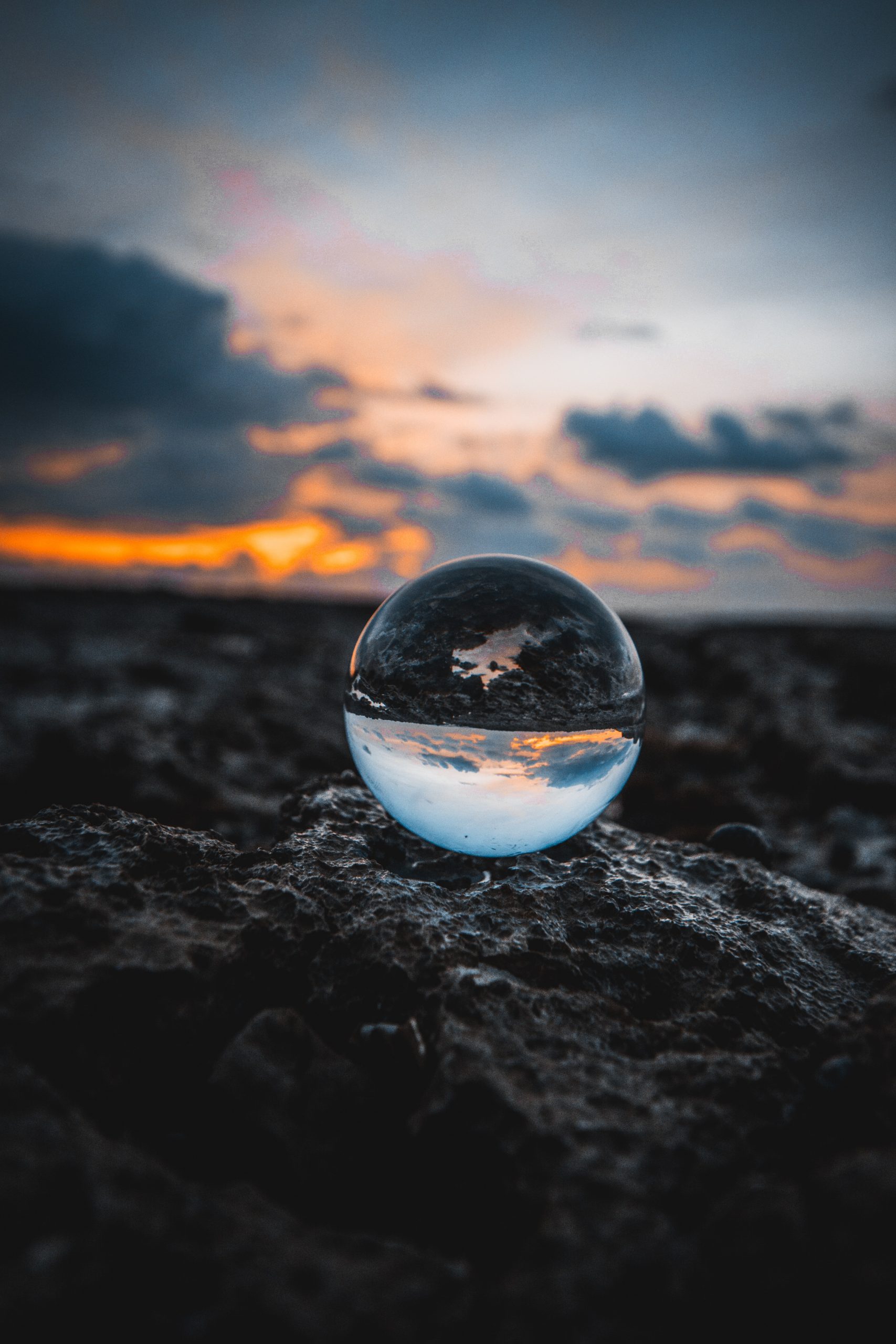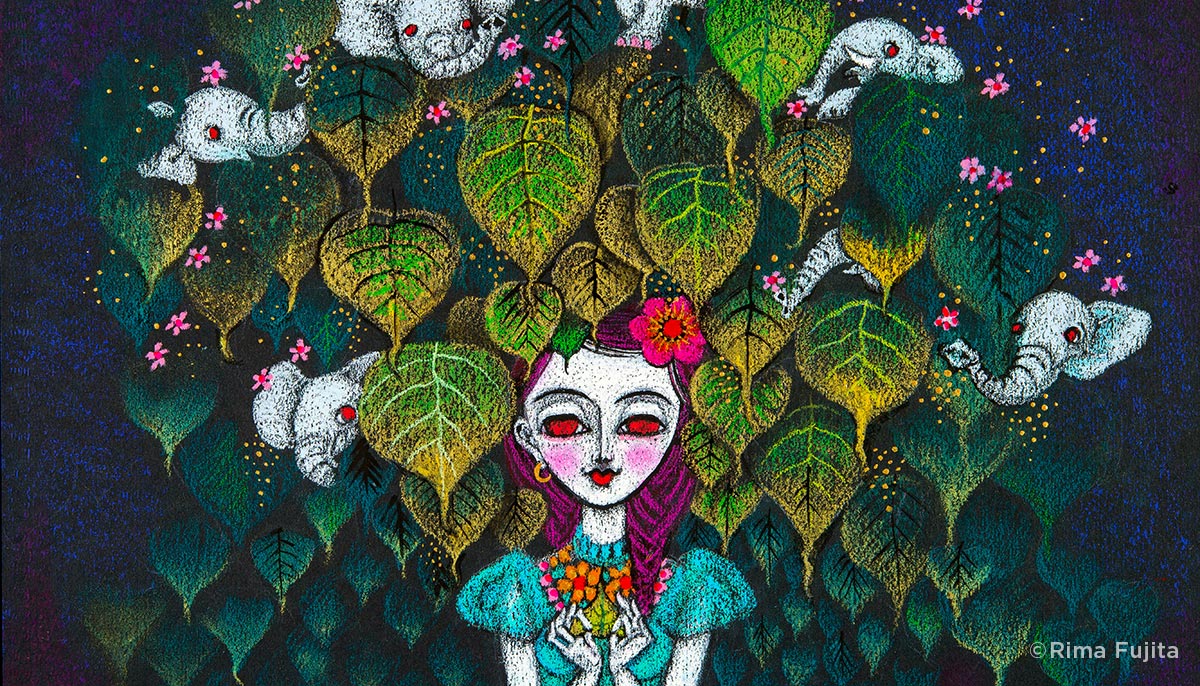Iron Sharpens Iron: Polishing the Mirror Through Mahamudra
An American Buddhist teacher on gaining deep insights by staying present within hostile environments The post Iron Sharpens Iron: Polishing the Mirror Through Mahamudra appeared first on Tricycle: The Buddhist Review.

The phone calls often came in the middle of the night. It didn’t matter where I was, or even whether I was on vacation or away at a conference—I always had to respond. This sense of uncertainty—the profoundly real understanding that at any moment anything would be asked of me—was an inherent part of my work. When that call would come, and it always did, I would get up, make the relevant notes, get dressed, and head to where I was needed. Often, I was the first person alerted to crisis situations.
My work as the first dedicated staff chaplain for the New York City Department of Correction led me to come face-to-face with pain, sorrow, loss, terror, fear, frustration, and anxiety, as well as the deep darkness that accompanies feelings of needing to shut down. It helped me understand what it is like to bear witness to things that felt too horrible to bring home and share with loved ones, things I saw in the jails on Rikers Island as well as those in the boroughs—some of which have since closed. The emergency response work wasn’t limited to only New York City jails, it included responses in community ERs and, in a few instances, crime scenes.
While touring the jails, I often heard the biblical proverb iron sharpens iron recited like a mantra. Used within the context of the jails, the phrase was meant to convey that we show up for one another and make each other better, stronger, and more resilient—at least this was the way that I tended to understand it. What it came to mean for me was different. For me, it was that everything I experience—the raw intensity of it all—sharpens my understanding of my mind and my relationship to the way that appearance arises and is experienced.
The practice of Mahamudra meditation was a vital life thread that helped me to be able to submerge myself into a deeper pool of human suffering than most people can imagine. Mahamudra allowed me the ability to train and understand my mind and its reactions in ways that simply would not have been possible in other circumstances. Unbeknownst to me when I began at Rikers, my initial introduction to practices like Mahamudra and Dzogchen in the mid-nineties would become crucial in how I showed up for myself, as well as others, in my work.
Mahamudra, like the practice of Dzogchen, is a dynamic, nonconceptual meditation practice known across the Vajrayana Buddhist world for its profundity, its simplicity, and its applicability within both monastic as well as lay styles of practice. In fact, the early progenitors of Mahamudra, as we understand it to have been practiced in India from the 7th through 11th centuries, seemed to be highly aware of the dangers of developing a disembodied meditation practice. As modern people, we tend to think of terms like embodied and engaged as the product of insights borne of current times. Yet when we look a little more closely at the time in which many of the early Buddhist siddhas lived, we see an appreciation for a deeply lived dharma through which the profundity of the mirror of the mind could be experienced within a variety of settings.
I owe my first lived relationship of Mahamudra to my root teacher, Ani Dechen Zangmo, a Sikkimese Tibetan Buddhist nun whom I met in Sikkim in 1995. I call Ani Dechen Zangmo my root teacher because she was the first person in this life to introduce me to the nature of my mind. This is the typical use of the term root teacher (Tib., tsawai lama). Like a skilled doctor, she used many techniques over the course of several weeks to help me in my training, including introducing formal meditation instructions on shamatha and vipashyana, spending time practicing meditation with me, answering questions, reflecting on my descriptions of my meditative experiences, and offering practical lived advice borne from her years of practice. She also offered pointing out instructions and encouraged me to copy out, by hand, a translation of The Flight of the Garuda, a collection of meditation instructions by Shabkar Tsogdruk Rangdrol. At her suggestion in 1997, I also began to study with the great Mahamudra master Kyabje Bokar Rinpoche—one of her teachers—spending eight years practicing under his direct guidance based upon his Mahamudra meditation manual, Opening the Door to Certainty.
The way the practice of Mahamudra has been taught over time seems to have changed. The songs of the early Indian masters are poetic, very direct, and appear to challenge the practitioner to move beyond assumptions about the nature of the mind and the external world, between the self and the other. Perhaps we could call it “song as direct transmission.” For example, in his Mahamudra Sancamitha, the 11th-century mahasiddha Maitripa sings to us:
All phenomena are one’s natural mind,
The perceived reality of the external world is rooted in mistaken mind;
Like a dream, it is devoid of an entity;
It is merely the movement of grasping and wakeful conscious awareness.
Lacking inherent existence, it is like the manifestation of the wind;
Empty of essence just like space;
All that appears is equally space-like;
This is said to be mahamudra.
Its essence cannot be taught;
For this reason, the nature of mind,
Due to the very nature of mahamudra,
Is free from fabrication or transformation.
By what is realization of the essential nature made?
The entirety of appearance is mahamudra,
The great, all-pervading dharmakaya,
Relax into the uncontrived nature of being.
This style of introduction to the natural state takes aim at the apparent seamlessness of our algorithmized habituation—the seemingly automatic ideas and reactions that define who we seem to be.
According to the Mahamudra view, the entire universe, a vast and ever-unfolding display of amazing appearance that never ends and is constantly changing, is reflected in the way that we interact with the richness of all that arises. Whether it be the visual field of color and form, the tactile nature of physicality, or the emotions and thoughts through which we interact with appearances, all our waking life and sleeping is a field of constant appearance. Typically, we spend most of our time hypnotized by the constancy of this display and the vividness of this tapestry, and forget how this play of phenomena is also a constant display of perfection—a series of moments pregnant with buddhanature that arise as they do.
Even in the brokenness, rage, and intensity of what arises at Rikers, or similarly challenging places, this spaciousness is still available—yet, in spite of this, we are often unable to fully relate to the spacious fullness of such difficult experiences. This is what makes Rikers a place I am grateful to have the opportunity to train in. Mahamudra invites us to touch into fresh and spontaneous experience without the need to comment or analyze.
This is why we practice—we practice learning that we can show up differently than the way that our habitual patterning often suggests that we should.
In later meditation manuals—like Bokar Tulku Rinpoche’s Opening the Door to Certainty (Clearpointe, 1996)—a more approachable, somewhat progressive path is presented. In the beginning, one trains in shamatha meditation, sometimes called calm abiding (Tib., shinay), training in a variety of techniques aimed at learning through direct meditative experience about how thoughts arise, how it is when they stay, and where it is that they go when they appear to leave us. Through sustained practice, one begins to gain confidence in the nature of the movement of thoughts as well as the stillness that arises when the proliferation of thought activity begins to settle. This is known as the experience of quiescence.
Once there is some stability in shamatha, the meditator moves into the practice of vipashyana, or superior insight, as it is called (Tib., lhaktong). This phase of meditation training allows the practitioner to begin to gain a clearer understanding of the nature of mind through really looking for the source of thoughts, looking at the location of the mind. Does the mind have a location? A center or edge? Is there space between thoughts? Where is the mind in relationship to time? Lhaktong allows us to begin to gain an increasingly clear understanding of the nature of the mind and its qualities.
When brought together, superior insight and calm abiding lead to a stable experience of the relaxed vastness of our being that has all the relative relevancies that we need to be able to function in our day-to-day lives while simultaneously not being fixed to any specific location. This relaxed, natural union of shinay and lhaktong affords us the opportunity to wake up from the act of forgetting the basic purity of our mind, and to experience the joy associated with relaxing into the recognition of its true nature. When this occurs, there is a freedom from the threads of narrative and patterned ways of seeing and referencing what is naturally arising, which pulls us out of relationship with the view of the mind in relationship to the vast and expansive way in which it arises.
Sometimes, in moments of feeling stuck, we land on narratives of pain and sadness, and stories rooted in hard bone and soft flesh that feel real and permanent. At other times, our conflicting emotions arising from the basic kleshas of attachment, aversion, and ignorance make this experience even more difficult. Everything can feel so compellingly all-consuming and definitive, especially within the context of experiencing difficult emotions, like fear, loss, anxiety, and lack of safety. These emotions and the emotional states that they lead to bring tremendous suffering. This is why we practice—we practice learning that we can show up differently than the way that our habitual patterning often suggests that we should.
The work is always right now. Whether we practice like Maitripa or in the style of Bokar Rinpoche and Ani Zangmo, the time is now, and the work is right in front of us—it’s in how we are relating to and experiencing our thoughts, concepts, the mind, and our ideas about it all—including even these words as they are being read.
Real-time emergency responses to crises borne of violence have been a powerful teacher for me. Whether in an ER or a jail facility, the guru of mind would always show up. In moments like those, when we can appreciate the awareness of how constricted the mind becomes, how experience is often reduced to a singular point of orientation, and how powerful the cultivation of the view of an expansive mind can be in helping ourselves and others to shift out of a narrow, constricted experience, we begin to sense the power inherent in meditation practice. After all, a shift in view often brings tremendous relief, even if for only a moment—not unlike a deep relaxed inhalation after a period of short labored breathing.
These experiences have led me to a deep appreciation for the taxonomy of the mind and its reactions, an experiential knowledge earned by showing up to things that many try to protect themselves from. This embodied practice of Mahamudra has helped me to hone, sharpen, and understand my mind in a rich and full-bodied way. I consider it an homage to the mahasiddhas who helped develop this style of meditation in the first place—so much so that I am grateful for every fear, uncertainty, and moment of wonder as to whether whatever I am experiencing will break me or help me to further polish the mirror.

 KickT
KickT 






























.jpeg?trim=0,89,0,88&width=1200&height=800&crop=1200:800)
